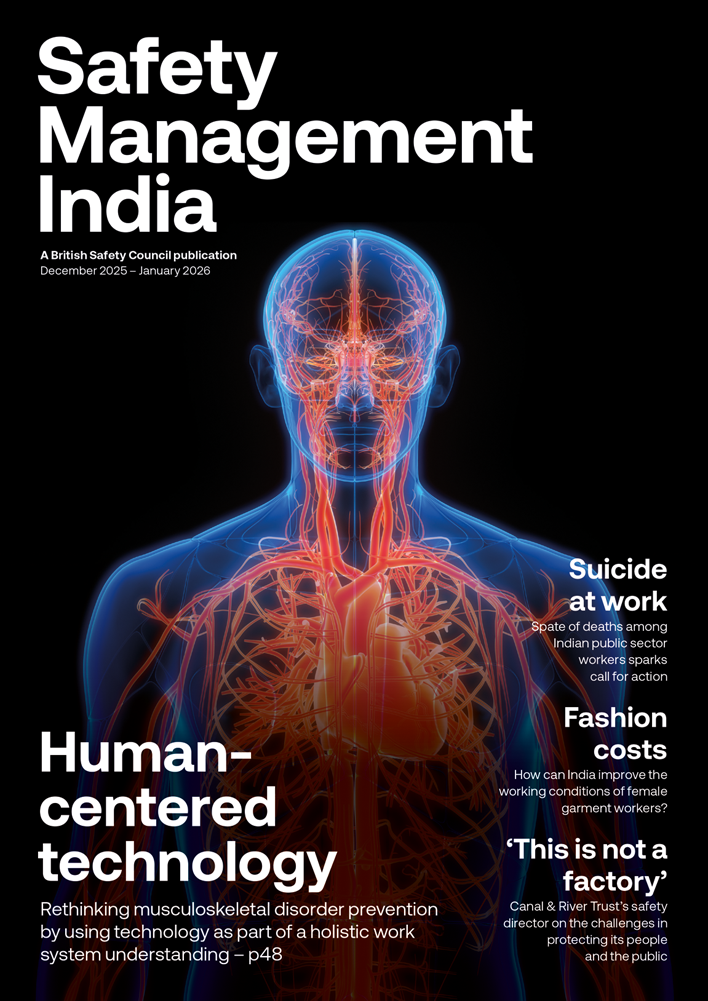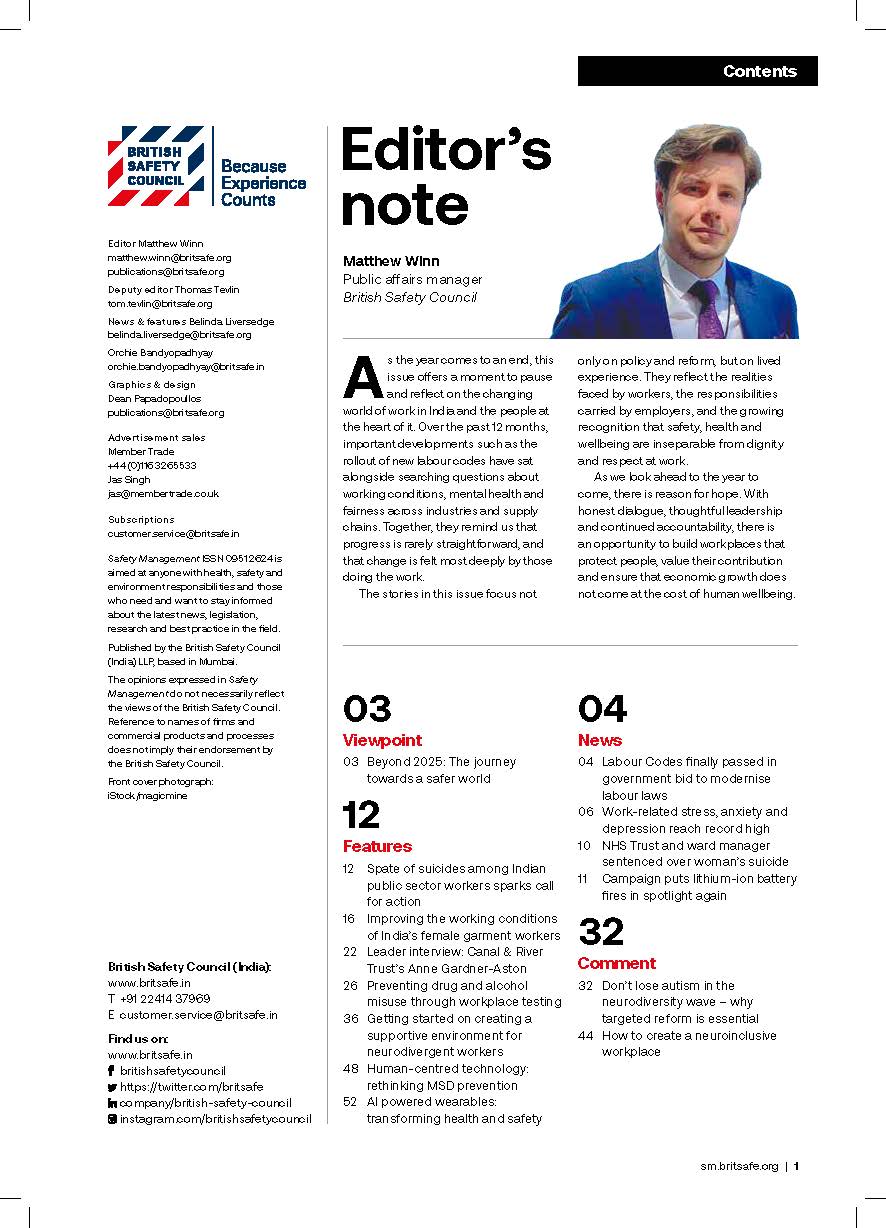If you are in the market for a new kitchen, you will come across engineered stone or ‘quartz’ worktops. Cheap, premium, luxury are words that will be thrown around photos and videos lingering on expanses of shiny, multicoloured stone. But not in Australia, where since July new engineered stone worktops have been banned (although some states allow a six-month transition period).
Opinion
It’s time to ban artificial stone worktops over silicosis risk
This month (September), health and safety rules controlling work on engineered stone came into effect also. The Australian government acted quickly after Safe Work Australia published an impact statement last October recommending a ban, with the regulations passed in December.
The move followed work by unions and safety campaigners, highlighting cases such as that of 22-year-old Queenslander Connor Downes, diagnosed with silicosis after three years as a stonemason. A study in that single state in 2019 found 84 workers diagnosed, 18 of whom were assessed as having terminal silicosis, one of whom died, aged 36, that year. Research this year in Australia concluded one in four masons is likely to contract it, with a likely long-term toll of more than 1,000.
 Baroness Bennett: "There are plenty of other options for kitchen and bathroom worktops. Why not take the precautionary approach and bring in a ban?"
Baroness Bennett: "There are plenty of other options for kitchen and bathroom worktops. Why not take the precautionary approach and bring in a ban?"
Long history of disease
This is no new disease. Silicosis has a long and desperate history as an industrial illness, described since ancient times among miners and stone cutters exposed to the mineral dust. In Canada, the Ontario government paid out its first tranche of compensation in 1924. This is not a problem arising from lack of medical knowledge.
What puts engineered stone into a whole new category is its silica content – in excess of 90 per cent crystalline silica, when granite, for example, is about 30 per cent and marble typically five per cent. And the physical nature of the dust means the illness is arising after a shorter duration of exposure, more rapid disease progression and higher death rates.
It was news of the Australian ban that led me in January to table an Oral Question in the House of Lords to ask if the British government intended to follow suit, informed by an extensive briefing from the Hazards Campaign, which has been working on the issue for years. To paraphrase, the answer I got from the then Conservative government was “all fine, nothing to see here, we have safety rules”. The Health and Safety Executive (HSE) was “not currently considering restrictions”.
Disappointing, and even more so when coverage of the issue by Joe Duggan at iNews led industry workers to contact me expressing their concern. The information I had then was that there were probably adequate safety precautions in the factories of major firms, but great concern about what happened at the time of installation, usually by independent contractors or sole workers. Measurements are not of course always perfect, and when a corner needs to be cut off here on site, or a hole drilled, was the full system of safety gear and dust-suppression deployed? Probably very rarely.
We now have a new government, so before the parliamentary summer recess, I tabled a written question, asking what the government planned to do to protect workers from silicosis. The answer I got yet again suggested that it was all under control: HSE “continues to inspect industries associated with exposure to respirable crystalline silica (RCS) and to respond to concerns about risk management reported to HSE”.
The answer arrived in August, only a day before a study was published in the peer-reviewed journal Thorax, written by UK doctors, demonstrating very clearly that we do have a problem, a very serious problem. It reported eight cases of silicosis among relatively young men (median age 34, the youngest 27, exposed to the occupational risk for as little as four years). That these cases date back to the middle of last year has to raise questions about the existence of “health surveillance identifying potential ill health” that the government promised me in January was in place.
Small-scale workshops
Most of the silicosis sufferers were migrant workers, vulnerable to workplace exploitation and unsafe conditions, working in small-scale workshops cutting and polishing engineered stone imported from China. One has already died, two are being considered for lung transplants. One has gone public to iNews: Malik al-Khalil, 31, a Syrian refugee who has spent months in hospital, cannot walk more than a few steps and requires oxygen to help him breathe.
Doctors expect that the cases will keep presenting in the UK, that this is just the start. The cases thus far appear to have been from acute exposure, but the kind of exposure kitchen installers were speaking about to me will probably take longer to appear. The damage has already been and continues to be done. It may take years to show symptoms, but it is not reversible.
Silicosis should be a reportable disease
So what needs to be done? I would say for starters a ban on new engineered stone worktops and silicosis to be made a reportable disease.
But action is needed beyond the specific issue of engineered stone. As the All-Party Parliamentary Group on Engineered Stone identified last year, it is a far broader industrial safety issue. Researchers from Imperial College London, also publishing in Thorax, have found that current occupational exposure limits should be halved. Looking at miners, they concluded this would cut the number of silicosis cases by 77 per cent. There is less data on other occupations, but farmers, quarry and pottery workers are among those where the issue also needs to be considered.
The final question I will keep putting to the government is even if it – or rather HSE – does not think there is enough evidence to ban engineered stone worktops, what would be the consequences if you did? No one is going to be left with a gaping hole in their kitchen, the great god of Gross Domestic Product will not be affected. There are plenty of other options for kitchen and bathroom worktops. Why not take the precautionary approach and bring in a ban?
This is a global issue. In California, at least 168 diagnoses have been reported, most of them migrant workers: 13 have died and 17 needed lung transplants. Cases have also been reported in Israel, Italy, Spain and Belgium. And what might be happening in production facilities in China, India and Iran, as well as with manufacturing and installation there is concerning. Australia has taken the lead, but the UK could also be a leader if it takes action now.
As a society we need to ask a further question: How can we stop introducing new products that cause damage to workers, broader society and the environment? My go-to example for this is plastic microbeads – put into facial scrubs, makeup and even toothpaste because they were marginally cheaper than traditional alternatives such as ground nut shells. They are now banned at least in cosmetic products. But why did someone in a boardroom or laboratory not say, “hang on a second: maybe it is not a good idea to fill our sewers (and bodies) with microplastics?”
We have a huge systemic problem to tackle in workplace safety, environmental and public health in intercepting dangerous products before they start harming people and planet.
Baroness Bennett of Manor Castle (Natalie Bennett) is a Green Party peer in the House of Lords. She was leader of the Green Party of England and Wales from 2012 to 2016. Follow her at:
OPINION
Don’t lose autism in the neurodiversity wave – why targeted reform is essential
By on 10 December 2025



